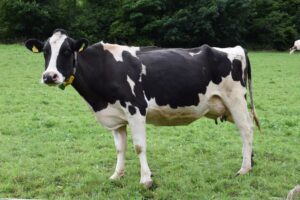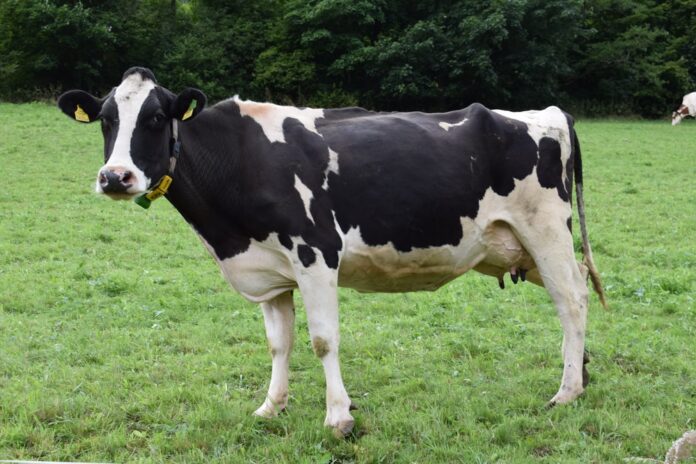Abstract
Cow The objective of this research was to evaluate the effects of the dwelling systems (loose vs tie-stall) on the welfare of dairy cow and to verify the notion that dairy cows living in loose housing systems enjoy better welfare quality than those in tie-stalls. 60 commercial farms (30 with loose housing and 30 with tie-stall housing) were selected for evaluation, using mainly animal-based measures and as per the Welfare Quality (r) protocol permits it. A total number of 2624 milking cows were assessed during the winter time. There were substantial variations between both systems of housing for the majority of the aspects of the four principles of welfare. The two systems also had significant differences in terms of the mean scores of the welfare criteria and principles which showed the majority of people pointing that the loose system was superior. Based on the results of the four principles, the majority of farms that had houses that were loose were categorized as higher while the majority of the tie-stall farms were considered acceptable. The results show that the welfare quality in dairy animals is significantly affected by the housing system, and that a loose housing system is more beneficial in terms of feeding, housing and behaviour and behaviour of dairy animals.

Introduction
According to Broom The welfare of an individual refers to its condition as regards its attempts to cope with its environment (Broom 1986). In this sense, welfare is a characteristic of an animal which is not given to it (Broom, 1991). If one were to compare the dairy industry to an open physical system there are only a handful of significant inputs (elements that are provided by the farmer to dairy cows) such as housing, nutrition (including the watering) as well as human-handling. The management of the farm decides on the aspects of these according to the possibilities of the farmer and the needs that are perceived by the animals. The result is all the traits of the cows that are affected by the inputs: the productive and reproductive performance, physical health and mental health; and primarily the welfare and production for the cattle. It has been shown that interactions between the production management and system can create large variations in herds in relation to the welfare of animals (Sandoe et al., 1997) and the type of housing utilized is an important element of influence. Therefore, it is clear that the many elements, components, facilities and devices of the living environment can affect the capacity of the animal to manage it. For example, the amount designs, the layout, and design of drinking and food facilities could influence the actions of the livestock (food or water intake) but also their social behaviour as well as the incidence of physical injuries (Rousing et al. 2000). Many different variations of cattle housing are available, but most of these can be classified in two major categories, depending on the degree of confinement for the cattle: the loose or the tie-stall housing system. The benefits and drawbacks of each and their effects on the behavior and health of the dairy cows are being thoroughly examined. In comparison to more traditional tie-stall systems loose housing comes with the benefit of improved udder health (Hultgren, 2002 Regula et al., 2004) as well as a lower chance of ketosis, and higher productivity (Valde et al. 1997) generally acknowledged by welfare researchers as having a superior chance of ensuring better animal well-being (Rousing et al., 2000). However, loose housing systems come with the drawback of an increased risk of lameness (Cook, 2003; Sogstad et al., 2005). There is some evidence to suggest that loose-housing (Weary and Taszkun 2000) as well as regular outdoor exercise (Gustafson, 1993 and Regula and others., 2004) are beneficial to the well-being and health that dairy cows enjoy. But, few studies were done on the overall welfare of the dairy cows in different housing conditions.
The aim of this study was to assess the effect on the system of housing (loose vs tie-stall) on the dairy cows’ well-being and to test the hypothesis that dairy cows living in a loose housing have higher quality of welfare as compared to those that are housed in tie-stalls.
Materials and methods
The farms
The study was conducted on 60 selected commercial dairy farms (mean +- Sd, 84+-36.2 lactating cows) 30 with tie stalls (mean +- SD, 70+-30.5 lactating cows) and 30 with a loose housing systems (mean +-SD, 98+-36.7 milking cows), from Transylvania, Romania. The criteria for selecting farms were management practices, farm size along with veterinary records and the approval from the farm owners to take part in the study.
In both the loose and tied housing systems, cattle breeds used were Holstein (30%) along with Romanian Spotted Cattle (70%). The mean milk production per cow for the year on the farms with loose housing systems (LHS) included 5089.2 kg as opposed to those with tie-stall housing systems (THS) 5197.0 kg. The tie-stalls of all farms were enclosed, with solid floors. The cows were kept in the stalls which had a length of 160cm and 250cm and widths between 85cm and 190 cm. In 90% of tie-stall farms bedding was used (straw or sawdust) in small amounts (1.5 kg./head./day, or less). The cows had access exercises (pasture or paddock) in 13 tie-stall farms. The cows were grazing on average 10.6 hours a day throughout the year, 182 days. The milking process was either by hand (six farms) or mechanically (24 farms) and in the barns. The farms with loose system (LHS) were partially and fully open, having cubbies (22 farms) or straw yards (eight farms) for the cows’ rest. In the majority of free-stall barns there was a sawdust bedding. It was the case that milking (automatic) was performed in milking parlours, twice every day. In the summer, the cows were pasturing on five farms (on average, 8 hours per day, 192 days per year). The farms were visited once in the winter months, where the cows were kept.
Assessment of welfare
The foundation and source for the welfare assessment of the cows in this case was the welfare quality (r) Assessment Protocol for Cattle (Welfare Quality Consortium, 2009). Two trained assessors evaluated the cows of each farm. The assessors, experienced in evaluating the welfare of cows utilized the assessment protocol before this study, on four farms with various housing arrangements (LHS and THS) which had smaller numbers of animals (50 cows on average and not included in the present study). The training was finalised when an inter- and intra-observer agreement of at minimum 80percent was achieved for each of the measures in the protocol. There were 2624 milking cattle (1205 cows in farms with THS or 1419 in the farms in farms that have LHS) were assessed; their numbers in each farm was calculated according to the instructions in the Welfare Quality assessment protocol. This protocol contains four major welfare principles, 12 criteria and 29 indicators (Table 1.). The reliability, validity, and repeatability of the welfare measures analyzed have been proven in earlier studies (Knierim and Winckler, 2009).
To prevent disturbing farming activities and conduct the evaluation in a non-stop manner, prior arrangements were made with the animal unit’s managers concerning the time, day, time and estimated duration of the visits to the farm. The farm visits were scheduled to take place at the least four weeks had passed from the end of the trim session of hoofs (for an appropriate lameness assessment). The overall inspection of the farms took place in the morning when milking was conducted for the cows. Based on the total amount of milked cows in the farm, as recommended in the assessment protocol a random selection of animals was carried out (every nth cow in the milking parlour in the LHS farms, or every nth cow within a row in the THS farms). The chosen animals were identified with an animal marker, and the same cows were evaluated for the scoring of every measure, in cases where random sampling was needed.
Statistical analysis
The statistical analysis was carried out using SPSS with Windows version 17. (SPSS Inc., Chicago, IL, USA). Descriptive statistical indicators were determined (mean range, standard error of the mean, median, range) for the 29 analyzed measures, for the scores of the 11 criteria such as absence of prolonged hungry (APH), absence of excessive thirst (APT) as well as comfort while resting (CAR) and ease of movement (EM) the absence of injury (AI) and absence of illnesses (AD) and absence of discomfort caused by treatment procedures (APIMP) as well as expression of social behavior (ESB) or expression of other behaviours (EOB) Good human-animal relation (GHAR) and the positive state of mind (PES) along with the results of the welfare four standards (good food, healthy housing as well as good health and behaviour) in the farms that had LHS and THS. The statistical significance of the effect of housing on welfare (measures that measure, criteria, and principles of welfare) in the farms examined was assessed using an analysis using the the t-test or the Mann-Whitney testbased upon the regular or irregular distribution of the data, determined using The Kolmogorov-Smirnov Test. P values that were less of 0.05 were considered as significant.
Discussion and results
Measures based on animals of good feeding, housing and health
Table 2 compares the descriptive statistical indicators (mean range, normal error and range of mean, median and the range) of animal-based measures to assess the fundamentals of good feeding, housing and health, as measured in tie-stall and loose farms. Significant differences were observed between the two housing systems, for 14 of the 21 parameters. The study provides some benefits of the open housing for dairy cows.
No significant variation (P>0.05) among LHS as well as THS was detected in the average percentage of very thin cows, though it was slightly higher in farms that had LHS. In both systems, the percentage of extremely thin cows was higher than that found by Regula et al. (2004) in tie-stall and loose farms in Switzerland and by Ostojic-Andric and others. (2011) in Serbia. Apart from the fact that cows lose weight due to the insufficient quantity and quality of feed as well as the lack of quality and quantity of feed in LHS most of the time the feed-fronts are too short to accommodate the concurrent feeding those animals (Estevez et al. 2007). In addition, the cows that are lame spend less time in feeding (Gomez and Cook 2010). The high proportion of lazy cows found in LHS may be one of the reasons for the high percentage of cows with thin skin.


